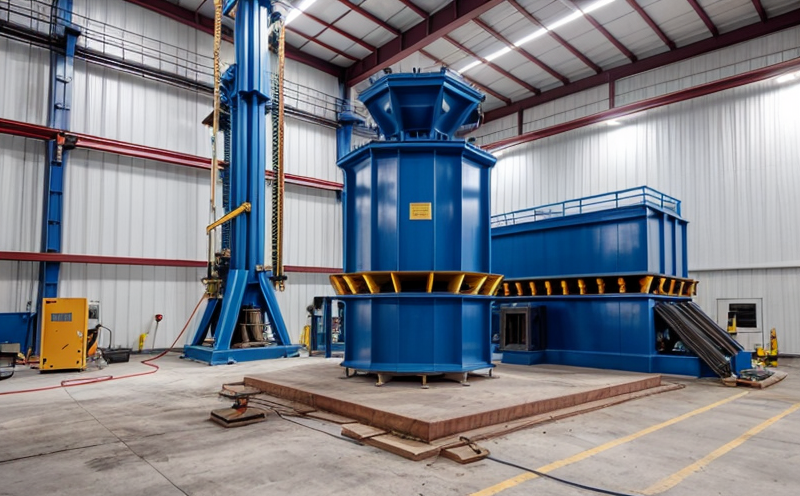ISO 18437-6 Dynamic Mechanical Properties of Materials
The ISO 18437 series is a comprehensive set of standards that covers the testing methods for dynamic mechanical properties of materials. This particular service, ISO 18437-6, focuses specifically on determining the dynamic mechanical properties of materials under cyclic loading conditions.
Dynamic mechanical analysis (DMA) involves studying how materials behave when subjected to alternating stress or strain over time. The results provide insights into a material's viscoelastic behavior, which is critical for understanding its performance in various applications such as polymers, composites, and rubbers. DMA testing helps engineers and scientists design products that can withstand mechanical stresses without degrading.
Dynamic properties are essential in fields like automotive engineering, aerospace manufacturing, and medical device development. For instance, the viscoelastic behavior of elastomers is crucial for designing seals or gaskets that need to perform reliably under varying environmental conditions. By understanding these properties through DMA testing, manufacturers can optimize their product designs for better durability and performance.
The test procedure outlined in ISO 18437-6 involves subjecting a specimen to controlled cyclic loading at different frequencies and amplitudes while monitoring its response. The data collected includes storage modulus (E'), loss modulus (E''), phase angle, and damping factor. These parameters describe the elastic and viscous components of deformation and quantify energy dissipation within the material.
Preparation of specimens for DMA testing requires careful consideration to ensure accurate results. Specimens must be representative of the actual product they will serve in real-world applications. For example, in automotive applications, tire samples might include cross-sections that mimic the tread pattern and structure used on commercial tires. Proper sample preparation ensures consistent test conditions across multiple trials.
Instrumentation plays a vital role in DMA testing. High-precision rheometers equipped with various adaptive fixtures are typically used to apply cyclic loading to specimens. These instruments provide real-time data on material behavior during testing, allowing researchers and engineers to make informed decisions about product design improvements.
Acceptance criteria for ISO 18437-6 include specified frequency ranges, temperature control accuracy, and repeatability limits. Compliance with these standards ensures consistent quality across different laboratories performing the same tests under varying environmental conditions.
The importance of DMA testing cannot be overstated in industries where material performance under cyclic loading is paramount. Whether it's for developing new composite materials or improving existing rubber products, understanding a material’s dynamic mechanical properties through ISO 18437-6 provides valuable insights into its suitability for specific applications.
- Provides detailed information on the viscoelastic behavior of materials under cyclic loading.
- Suitable for various industries including automotive, aerospace, and medical device manufacturing.
- Invaluable for optimizing product design by ensuring durability and performance in real-world conditions.
Applied Standards
The ISO 18437 series of standards is widely recognized in numerous industries due to its comprehensive approach to testing dynamic mechanical properties. It covers a broad spectrum of materials, including polymers, composites, rubbers, and other viscoelastic substances.
Specifically, ISO 18437-6 focuses on the determination of dynamic mechanical properties under cyclic loading conditions. This standard is integral to ensuring that materials meet specified performance criteria across various applications. By adhering to these standards, manufacturers can guarantee consistent quality and reliability in their products.
Other relevant international standards include ASTM D4060-18 for polymer blends, EN 327:2015 for rubber compounds, and IEC 60068-2-14 for electronic components. These complementary standards provide additional context and support when implementing ISO 18437-6 in broader testing protocols.
The application of these standards extends beyond mere compliance; they serve as guiding principles for innovation within the industry. They facilitate communication between different stakeholders, ensuring everyone involved understands the expectations regarding material performance.
By leveraging internationally recognized standards like ISO 18437-6, companies can enhance their competitive edge by producing higher-quality products that meet rigorous testing requirements. This not only builds trust among customers but also fosters collaboration with other industry leaders worldwide.
Why Choose This Test
- Precision: High-precision instruments ensure accurate measurement of dynamic mechanical properties.
- Consistency: Adherence to international standards guarantees consistent results across different laboratories.
- Comprehensive: Covers a wide range of materials and applications, providing detailed insights into material behavior.
- Predictive: Helps in predicting the long-term performance of materials under cyclic loading conditions.
International Acceptance and Recognition
The ISO 18437 series enjoys widespread recognition across various industries due to its robust methodology and comprehensive coverage. Many organizations worldwide have adopted these standards as a benchmark for quality assurance.
For instance, in the automotive industry, manufacturers rely on DMA testing to ensure that seals and gaskets can withstand cyclic loading without failure. Similarly, in aerospace applications, understanding the dynamic mechanical properties of composite materials is crucial for maintaining structural integrity during flight operations.
The medical device sector also benefits significantly from ISO 18437-6 testing. Implants made from viscoelastic materials need to perform reliably under repetitive stress cycles without compromising safety or efficacy.
By choosing this test, clients can ensure that their products meet stringent international standards and gain competitive advantages in the global market. The results obtained are respected by regulatory bodies around the world, providing assurance of compliance with relevant codes and regulations.





